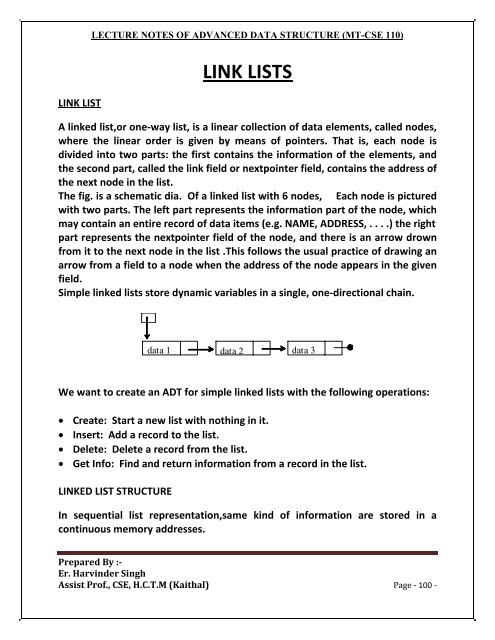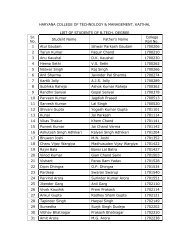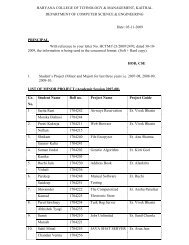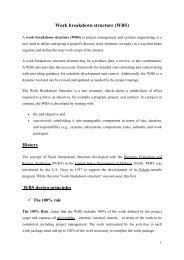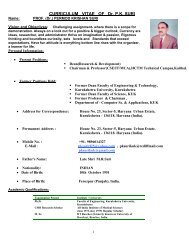You also want an ePaper? Increase the reach of your titles
YUMPU automatically turns print PDFs into web optimized ePapers that Google loves.
LINK LIST<br />
LECTURE NOTES OF ADVANCED DATA STRUCTURE (MT-CSE 110)<br />
LINK LISTS<br />
A linked list,or one‐way list, is a linear collection of data elements, called nodes,<br />
where the linear order is given by means of pointers. That is, each node is<br />
divided into two parts: the first contains the information of the elements, and<br />
the second part, called the link field or nextpointer field, contains the address of<br />
the next node in the list.<br />
The fig. is a schematic dia. Of a linked list with 6 nodes, Each node is pictured<br />
with two parts. The left part represents the information part of the node, which<br />
may contain an entire record of data items (e.g. NAME, ADDRESS, . . . .) the right<br />
part represents the nextpointer field of the node, and there is an arrow drown<br />
from it to the next node in the list .This follows the usual practice of drawing an<br />
arrow from a field to a node when the address of the node appears in the given<br />
field.<br />
Simple linked lists store dynamic variables in a single, one‐directional chain.<br />
data 1 data 2 data 3<br />
We want to create an ADT for simple linked lists with the following operations:<br />
• Create: Start a new list with nothing in it.<br />
• Insert: Add a record to the list.<br />
• Delete: Delete a record from the list.<br />
• Get Info: Find and return information from a record in the list.<br />
LINKED LIST STRUCTURE<br />
In sequential list representation,same kind of information are stored in a<br />
continuous memory addresses.<br />
Prepared By :<br />
Er. Harvinder Singh<br />
Assist Prof., CSE, H.C.T.M (Kaithal) Page ‐ 100 ‐


